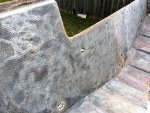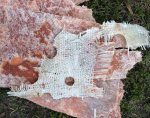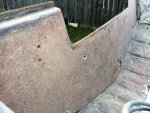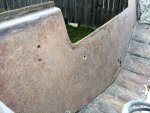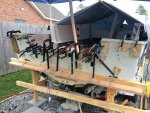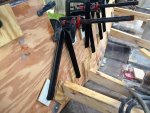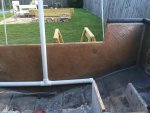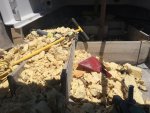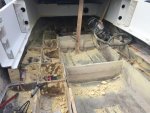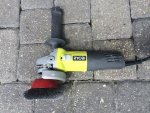BayouWaters
Petty Officer 3rd Class
- Joined
- Jan 29, 2017
- Messages
- 78
Thought I was back to clean glass on my transom and noticed some dark spots after returning from a work trip. As I ground a little deeper I am finding pockets of water between the remaining CSM and the boat hull where the wood core was added to the hull. I have also found little pockets of water in the fiberglass from the original transom tabbing along the bottom of the hull. The tabbing resin used has a bright reddish purple hue and has moisture trapped in it...UGH!!!! As I continue to grind it looks like I am going to have to grind all the way back to the original hull which is a dark grey in appearance. This layer appears to be dry with no voids.
Anyone ever encounter this before? I am also rethinking my grinding options as the 4 1/2" grinder is just too slow. Looking at a 7" grinder equipped with 16 grit ceramic grinding discs...any thoughts on quick fiberglass removal?

Anyone ever encounter this before? I am also rethinking my grinding options as the 4 1/2" grinder is just too slow. Looking at a 7" grinder equipped with 16 grit ceramic grinding discs...any thoughts on quick fiberglass removal?























